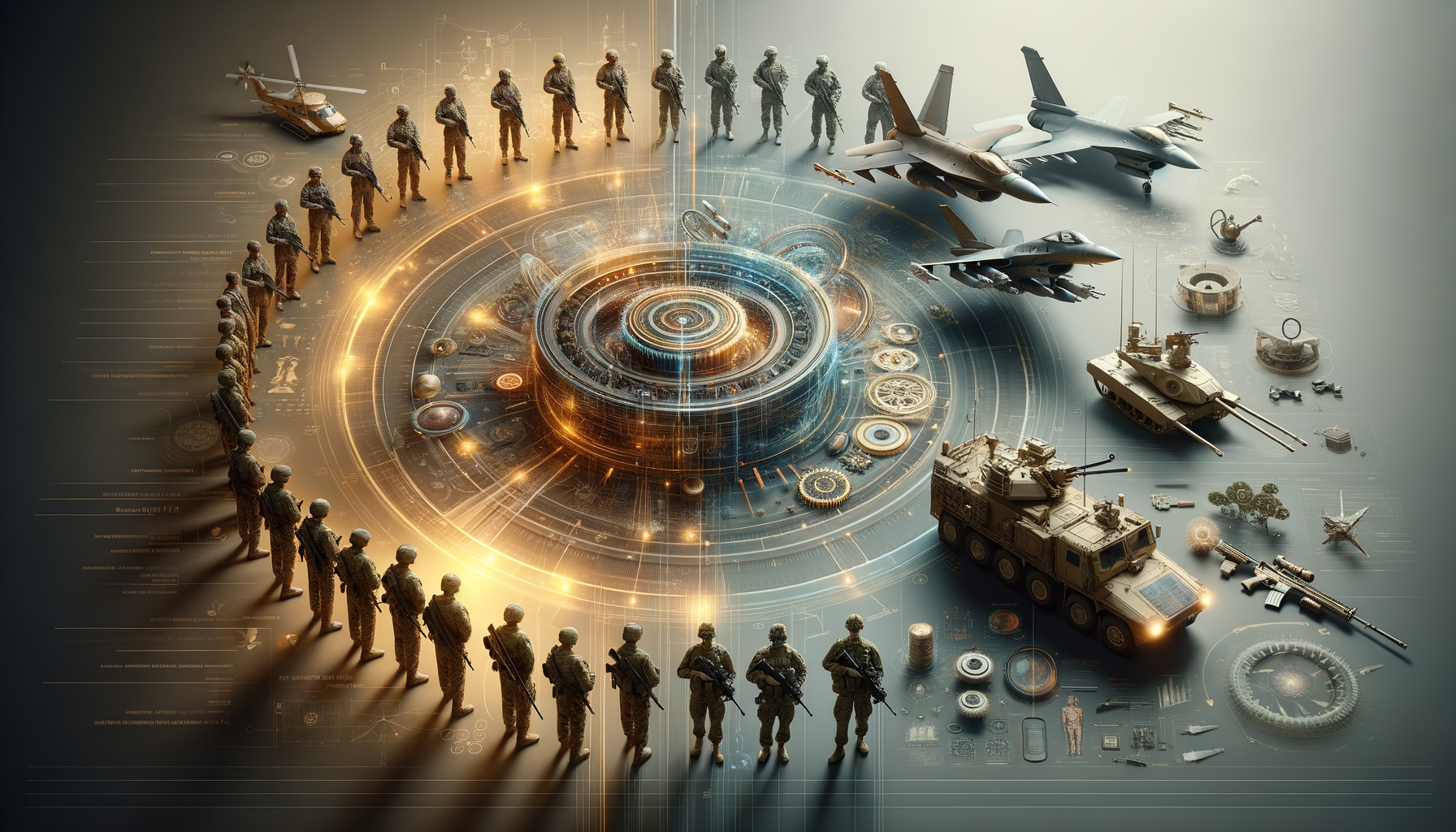Introduction to Modern Military Programs
The evolution of military programs is a fascinating journey from traditional warfare to the integration of cutting-edge technology and strategic planning. In today’s world, military programs play a crucial role in national security, ensuring that countries are well-equipped to face modern challenges. The integration of advanced technology and strategic capabilities has transformed how military operations are conducted, making them more efficient and effective.
Understanding the evolution of military programs is essential to appreciate the advancements in technology and strategy that have shaped modern defense systems. From the early days of organized warfare to the present-day use of artificial intelligence and cyber warfare, military programs have continually adapted to meet the needs of the times.
This article explores the significant changes in military programs, focusing on technological advancements, strategic developments, and the importance of training and education in the armed forces. By examining these aspects, we gain a comprehensive understanding of how military programs have evolved and their impact on global security.
The Evolution of Military Programs
The history of military programs is marked by significant milestones that reflect the changing nature of warfare. From the use of basic weapons and tactics in ancient times to the sophisticated systems employed today, military programs have undergone substantial transformations.
One of the most notable changes in military programs is the shift from conventional warfare to asymmetric warfare. This shift has necessitated the development of new strategies and technologies to address unconventional threats. For instance, the rise of terrorism and cyber threats has prompted militaries to invest in specialized training and equipment to counter these challenges.
Moreover, the evolution of military programs has been influenced by geopolitical factors and technological advancements. The Cold War era, for example, saw significant investments in nuclear weapons and missile defense systems, reflecting the strategic priorities of that time. Today, the focus has shifted to areas such as cyber defense and space capabilities, highlighting the dynamic nature of military programs.
Key aspects of this evolution include:
- Integration of technology in warfare
- Development of new strategies to address emerging threats
- Focus on specialized training and education
Overall, the evolution of military programs underscores the importance of adaptability and innovation in maintaining national security.
Technological Advancements in the Military
Technological advancements have revolutionized military programs, enabling armed forces to operate with greater precision and efficiency. The integration of advanced technology has transformed various aspects of military operations, from intelligence gathering to combat tactics.
One of the most significant technological advancements in the military is the use of unmanned systems, such as drones and autonomous vehicles. These systems offer numerous advantages, including reduced risk to human life and enhanced surveillance capabilities. Drones, for instance, have become indispensable tools for reconnaissance and targeted strikes, providing real-time intelligence and precision targeting.
Another area of technological advancement is cyber warfare. As militaries become increasingly reliant on digital systems, the need for robust cyber defense capabilities has grown. Cyber warfare involves protecting critical infrastructure from cyber attacks and developing offensive capabilities to disrupt enemy networks.
Additionally, the use of artificial intelligence (AI) in military programs is on the rise. AI technologies are being employed to analyze vast amounts of data, improve decision-making processes, and enhance autonomous systems. These advancements are reshaping how military operations are planned and executed, offering new opportunities for strategic innovation.
Overall, technological advancements are driving the modernization of military programs, providing armed forces with the tools they need to address contemporary security challenges effectively.
Training and Education in the Armed Forces
Training and education are fundamental components of military programs, ensuring that personnel are well-prepared to handle the complexities of modern warfare. The emphasis on continuous learning and skill development reflects the dynamic nature of military operations and the need to adapt to emerging threats.
Military training programs are designed to equip personnel with the necessary skills and knowledge to perform their duties effectively. This includes physical training, technical skills development, and leadership training. The goal is to create a well-rounded force capable of responding to various scenarios with competence and confidence.
Education in the armed forces extends beyond basic training, with opportunities for advanced studies and specialized courses. Many militaries offer programs that allow personnel to pursue higher education in fields such as engineering, cybersecurity, and international relations. This focus on education ensures that military personnel are equipped with the expertise needed to navigate complex operational environments.
Moreover, joint training exercises with allied forces are common, promoting interoperability and cooperation. These exercises provide valuable opportunities for personnel to learn from one another and develop a deeper understanding of different military cultures and practices.
In summary, training and education are integral to the success of military programs, fostering a culture of excellence and adaptability within the armed forces.
Conclusion: The Future of Military Programs
As we look to the future, military programs will continue to evolve in response to changing security landscapes and technological advancements. The integration of new technologies, such as artificial intelligence and cyber capabilities, will play a pivotal role in shaping the future of military operations.
Furthermore, the importance of strategic planning and international cooperation will remain central to military programs. As global threats become more interconnected, collaboration among nations will be essential to address shared security challenges effectively.
The ongoing focus on training and education will ensure that military personnel are well-prepared to meet the demands of modern warfare. By investing in the development of skills and knowledge, armed forces can maintain a competitive edge in an increasingly complex security environment.
In conclusion, the evolution of military programs reflects the need for continuous innovation and adaptability. As militaries navigate the complexities of the 21st century, the integration of technology, strategy, and education will be key to ensuring national security and global stability.




Leave a Reply